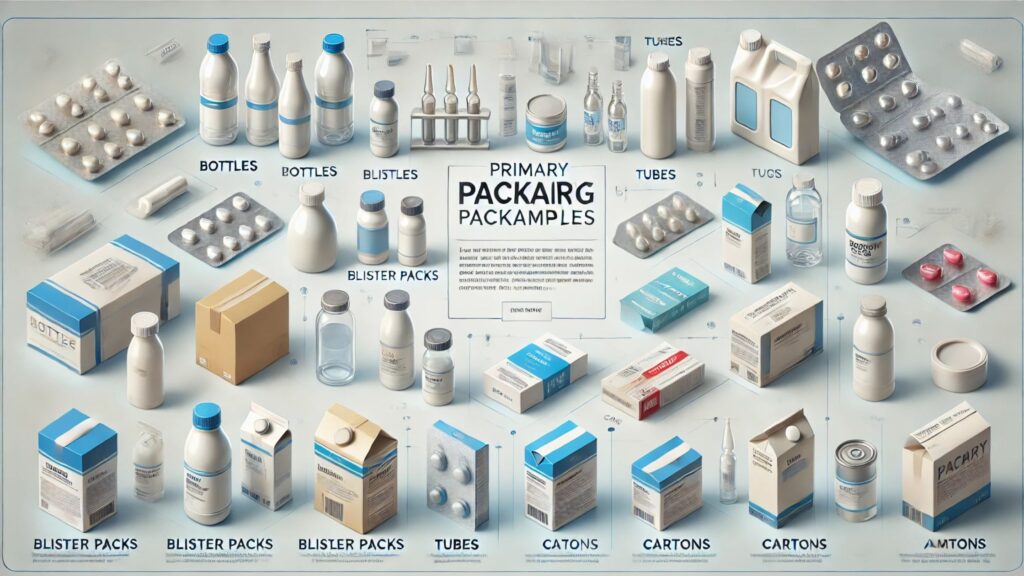Primary Packaging Examples: When it comes to packaging, primary packaging plays a crucial role in protecting products, ensuring their safety, and enhancing their appeal to consumers. Whether it’s food, pharmaceuticals, or cosmetics, the right primary packaging can make a significant difference in product preservation and customer satisfaction. In this blog post, we’ll explore primary packaging examples across different industries and discuss their importance.
What Is Primary Packaging?
Primary packaging is the first layer of packaging that comes in direct contact with the product. It serves as the main protective barrier and helps maintain the product’s integrity, quality, and usability. It is also designed to provide essential information, such as ingredients, usage instructions, and expiration dates.
Common Primary Packaging Examples
1. Bottles and Jars
- Industries: Food, beverages, pharmaceuticals, cosmetics
- Examples: Water bottles, juice bottles, pill bottles, cosmetic jars
- Purpose: These containers protect liquid or semi-solid products and prevent contamination. They often come with secure closures to maintain freshness and avoid leakage.
2. Blister Packs
- Industries: Pharmaceuticals, consumer electronics
- Examples: Tablet blister packs, battery blister packs
- Purpose: Blister packs provide individual compartments for tablets or capsules, ensuring accurate dosage and protection from moisture and contamination.
3. Tubes
- Industries: Cosmetics, pharmaceuticals, food
- Examples: Toothpaste tubes, hand cream tubes, ointment tubes
- Purpose: Tubes help in dispensing semi-solid products while maintaining hygiene and preventing exposure to air.
4. Cans
- Industries: Food, beverages, chemicals
- Examples: Soda cans, canned soup, aerosol spray cans
- Purpose: Cans offer durability and protection against external elements, extending shelf life and maintaining product freshness.
5. Sachets and Pouches
- Industries: Food, personal care, pharmaceuticals
- Examples: Ketchup sachets, face mask pouches, single-dose medicine sachets
- Purpose: These are cost-effective and convenient for single-use products, ensuring portion control and ease of transport.
6. Cartons and Boxes
- Industries: Food, pharmaceuticals, electronics
- Examples: Cereal boxes, medication cartons, smartphone boxes
- Purpose: While often considered secondary packaging, cartons can also be primary packaging when they hold products directly, providing structure and protection.
7. Ampoules and Vials
- Industries: Pharmaceuticals, healthcare
- Examples: Injectable medicine ampoules, vaccine vials
- Purpose: These ensure precise dosage and sterility for critical medical applications.
Why Primary Packaging Matters
- Product Protection: Shields products from physical damage, contamination, and environmental factors.
- Preservation: Maintains freshness, potency, and shelf life.
- Consumer Convenience: Enhances usability and portability.
- Branding and Marketing: Communicates brand identity and attracts customers.
- Regulatory Compliance: Ensures legal labeling and safety requirements are met.
Final Thoughts: Primary Packaging Examples
Primary packaging is essential for product safety, quality, and appeal. Whether it’s a simple bottle or a sophisticated blister pack, choosing the right type of packaging enhances the user experience and ensures the product reaches consumers in optimal condition.
If you’re in the packaging industry or looking for solutions for your products, understanding these primary packaging examples will help you make informed decisions. Have a favorite type of packaging? Let us know in the comments!
Related Articles
- The Art and Science of Packaging | Trends, History & Future
- Primary Packaging vs Secondary Packaging: Understanding the Differences
- The Future of Smart Packaging: Innovation at Its Best
- The Importance of Industrial Packaging in Modern Supply Chains
- The Power of Brand Packaging: How It Shapes Consumer Perception
- The Art of Candy Packaging: More Than Just a Wrapper
- The Rise of Green Packaging: A Sustainable Future
- The Future of Sustainable Solutions: Recyclable Packaging
- The Art of Luxury Packaging: Elevating Brand Prestige
- Bulk Packaging: The Key to Cost-Effective and Sustainable Shipping

